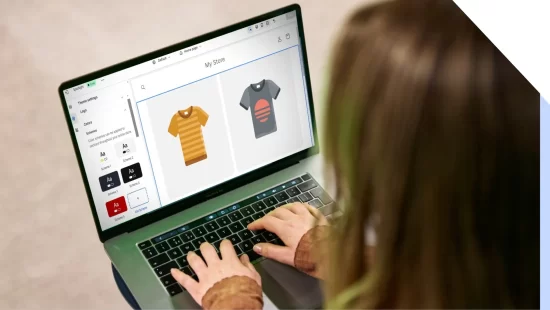Dr. Don García with patient Efren Avalos, who learned to control his diabetes at the Clinica Romero.
November is National Diabetes Month, a time when health agencies try to bring attention to a disease that affects 38 million people in the country, 9.7 million of whom don’t even know it.
Efren Avalos was one of those who didn’t know it.
A native of Nayarit, Mexico, the 71-year-old has been living with diabetes for about 15 years, when he was first diagnosed with the disease after a scary episode.
“I was driving on the freeway and all of a sudden I got really dizzy and felt strange,” Avalos recalled. “I went to the emergency department because I felt I could not drive anymore.”
His blood sugar level was at 460 (normal is anything under 125 when someone has fasted) and he had to stay there until it was brought down.
A few days later he decided to go to Clinica Romero, where he usually went for health checkups, and he was told he had diabetes.
He’s kept the disease under control since then thanks to the medication he takes, therapy, and nutritional classes he’s received at Clinica Romero. They’ve also taught him how to check his glucose level and how to inject insulin—something he’s been doing for the past 10 years.
“They’ve taught me what to eat, what not to eat,” said Avalos, who admits to eating lots of bread, pozole, menudo, and just about anything before and changing that for fish, chicken and reducing his intake of rice and pastas, and other flours.
Diet and Exercise
P.A. Deisy Mendoza, a family practitioner at Clinica Romero who treats Avalos, notes the importance of limiting carbohydrates in our diets to reduce the threat of diabetes.
“Many people say they got diabetes because they got scared or were angry, but it’s not about that,” she said.
The culprit is what we put in our bodies, and for Latinos, the “T” diet (tacos, tamales, tortas, etc), doesn’t help.
P.A. Mendoza said for diabetics, it’s not about eliminating all that we eat entirely, but reducing those things that harm them.
Bread, tortillas, masa (dough) are carbohydrates that become sugar when metabolize in our body. If we overeat these products, our body may have trouble dealing with all that sugar.
She explained that when you eat a tortilla, sugar is released as it metabolizes. Your pancreas releases insulin into the body to capture that sugar (also known as glucose) to take it where it needs to go. But when you have diabetes, the pancreas may not be efficiently working to release insulin and the glucose doesn’t go anywhere.
P.A. Mendoza said for diabetics, it’s not about eliminating all that we eat entirely, but reducing those things that harm them.
“You can still eat your tortillas, but not four in one sitting, just one,” she said. “If you eat beans, don’t eat rice, if you eat rice, don’t eat tortillas because that’s carbs over carbs.”
“If they limit their tortillas, the diabetes is going to be more under control and you can live longer,” she added.
And if you “cheat” and eat things that increase your sugar level, go out for a walk to make up for it, she recommended.
Diabetics should also take care of other healthy check ups.
“Diabetes is not going to kill you. What kills you is the harm the diabetes does to the different organs,” she explained. “This disease doesn’t take you right way; it takes you slowly.”
Diabetes may affect vision, so you should see an optometrist once a year. When you have high sugar levels, your saliva also has more sugar, which can lead to a higher rate of cavities, so go to the dentist regularly. Diabetes may also affect the kidneys and circulation, which if unchecked can lead to ulcers on the feet and – in extreme cases – amputation.
That’s why it’s imperative that if you experience any blurry vision, increase in thirst and peeing, or fungus/itchiness in your private areas (all diabetes symptoms), you get yourself checked as soon as possible.
That check up will include two tests: one your blood sugar level (less than 125 when fasting is optimum), and the next will be an A1C reading, where those found to have an A1C of 5.7 to 6.5 are considered prediabetic and can start on medication; anything over 6.5 is the definition of diabetes.
There are two types of diabetes: Type 1 (usually found in children) and Type 2 (when the pancreas doesn’t produce enough insulin to deal with blood sugar levels.
Explaining all of these, the importance of exercising and eating well, and the proper use of medication is what P.A. Mendoza said makes all the difference in her patients.
And that’s the advantage of the care they provide at Clinica Romero.
“We know the culture, we understand the language. We explain things so you can understand how to take care of you and your family,” she said. “We offer transportation for those who don’t have it, we provide telephone appointments if you’re too busy at work, we have in-person. We have different options to make it as easy as possible.”
“Diabetes has to do a lot with lifestyle. If you take your medication, you exercise and eat well, you should have a normal life.”
So if you feel unwell, or simply want to know where you stand or have a history of diabetes in your family (which increases the likelihood of suffering from this disease), go for a check up.
“The sooner we catch it, the better,” P.A. Mendoza said. “Then we can still reverse it. I have patients who have eliminated their diabetes.”
Diabetes, she noted, is a manageable disease—something Avalos knows first hand.
Since being diagnosed 15 years ago, he’s changed his diet and slimmed down, and has continued leading a normal live—even working part-time at a tax office.
He’s still seen every two months or so and credits the care at Clinica Romero for still being alive today.
“I’m proof that one can live with diabetes,” Avalos said. “You just have to take care of yourself and follow the doctor’s orders. You also have to be careful what you put in your stomach.”
Elaine DeSimone: A Safe Place to Start Anew for Domestic Violence Victims








